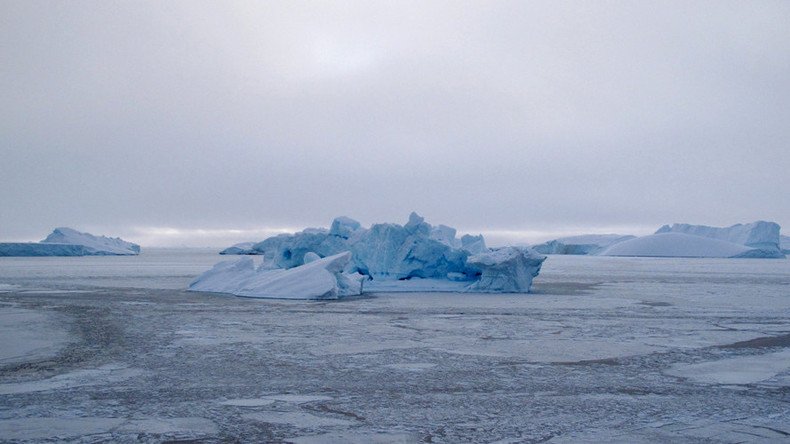Climate change may be vastly underestimated due to ocean temperature miscalculations - study

Scientists have discovered a flaw in the method used to measure past ocean temperatures which, if correct, could mean we have underestimated the rate of climate change over the past 100 million years.
According to the current methodology, the temperature of the ocean depths, and the surface of the polar ocean, was some 15C (59F) higher 100 million years ago, compared to now.
These estimates have been challenged, however, by a joint team of researchers from the French National Center for Scientific Research (CNRS) and the Swiss Federal Institute of Technology in Lausanne (EPFL).
In their study, published in Nature Communications, the team posits that ocean temperatures may have remained relatively stable throughout this period, raising serious concerns about the current level of climate change being experienced by Mother Earth.
Scientists to study 120,000yo ecosystem uncovered after 1tn-ton iceberg break (PHOTOS) https://t.co/8byRh7kD1Jpic.twitter.com/Ey8l1Tviap
— RT (@RT_com) October 11, 2017
“If we are right, our study challenges decades of paleoclimate research,” EPFL’s Anders Meibom said. “Oceans cover 70 percent of our planet. They play a key role in the Earth's climate. Knowing the extent to which their temperatures have varied over geological time is crucial if we are to gain a fuller understanding of how they behave and to predict the consequences of current climate change more accurately.”
Researchers believe that over the last 50 years certain processes used in current methodology were overlooked. Scientists have used foraminifera, which are tiny marine fossils found in the sediment cores extracted from the ocean floor, to calculate ocean temperatures.
This is done by calculating the levels of oxygen-18 content in the calcareous shells of foraminifera. The level of oxygen-18 is dependent on the temperature of the ocean in which the foraminifera live.
‘Hellish’ heat waves could become norm in Europe - study https://t.co/oFmpweCxWE
— RT (@RT_com) September 27, 2017
The problem now, it seems, is that all of these estimates were based on the principle that the oxygen-18 content remained constant while the fossils were in the sediment. To test this theory, the team exposed the foraminifera to high temperatures in simulated seawater that only contained oxygen-18.
The results show that “the level of oxygen-18 present in the foraminifera tests can in fact change without leaving a visible trace, thereby challenging the reliability of their use as a thermometer.”
“What appeared to be perfectly preserved fossils are in fact not,” CNRS researcher Sylvain Bernard said. This basically means that previous estimates of ocean temperatures are simply incorrect and instead of showing the aforementioned 15C-degree drop over the last 100 million years, the study notes that “these measurements simply reflect the change in oxygen-18 content in the fossil foraminifera tests.”
Hundreds of mummified corpses could emerge in Alps as glaciers retreat https://t.co/BRYKf2QeiDpic.twitter.com/aT21X7Q3Jy
— RT (@RT_com) August 6, 2017
“This change appears to be the result of a process called re-equilibration: during sedimentation, temperatures rise by 20 to 30C, causing the foraminifera tests to re-equilibrate with the surrounding water,” the study says.
But what next? Well, Meibom says scientists will now have to revisit the ocean's paleotemperatures and “carefully quantify this re-equilibration, which has been overlooked for too long.”
The researchers say that they will now focus on a number of other marine organisms to see if they can “clearly understand what took place in the sediment over geological time.”












